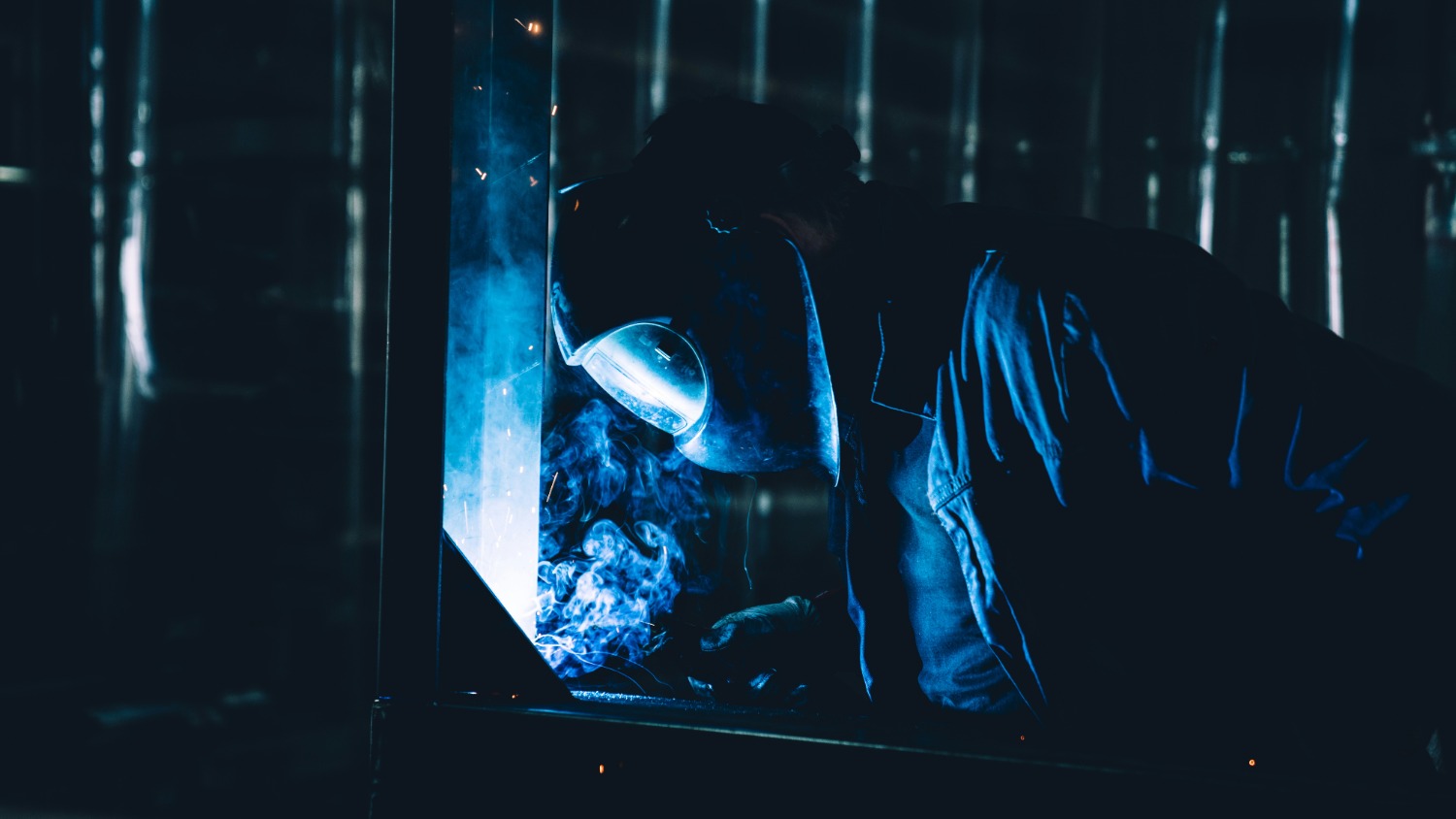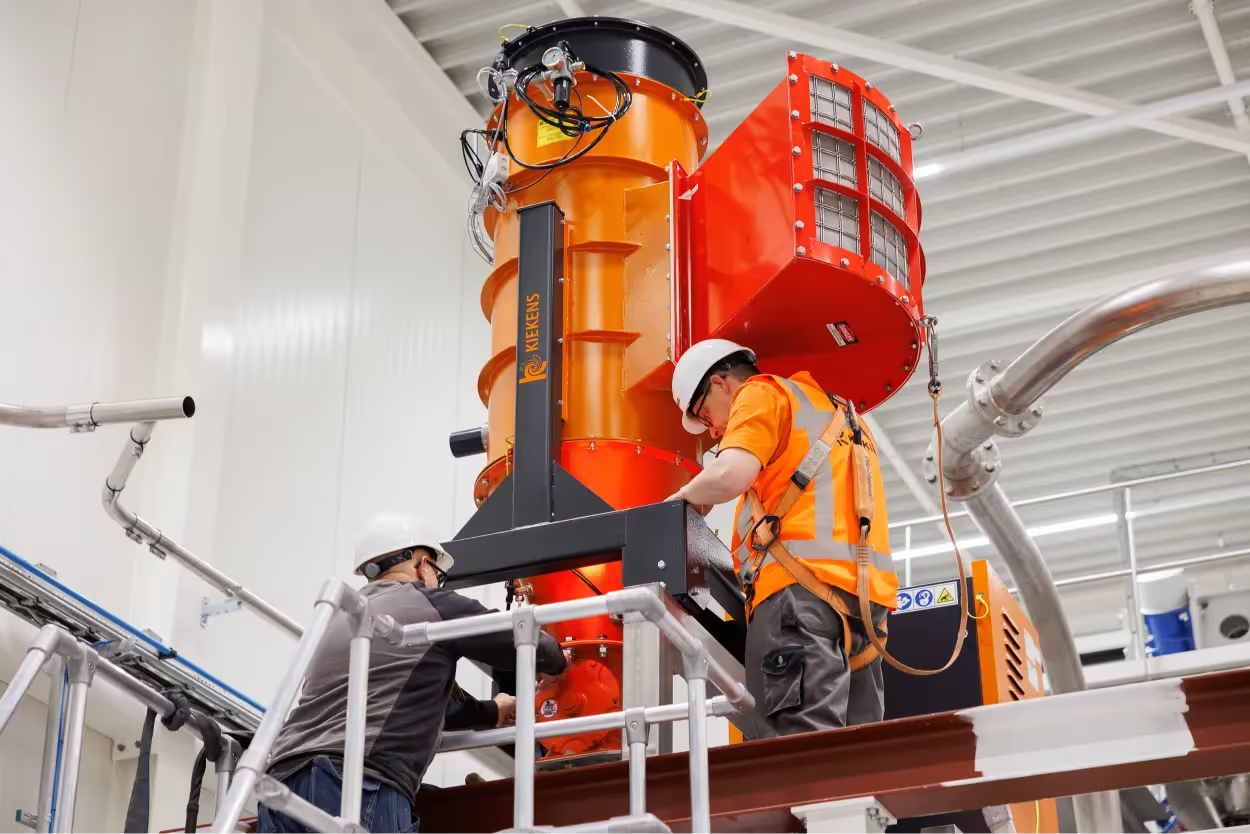Extraction of welding fumes: why it is essential for a safe working environment

What is welding fumes?
Welding fumes are a complex mixture of solid particles and gases that are released during welding work. Due to the high temperature, metals and additives evaporate and then condense into tiny particles, often in the nanometer range. These solid particles form the visible smoke. In addition, harmful gases such as carbon monoxide, carbon dioxide, nitrogen oxides and ozone are also created. The exact composition depends on the welding process and the materials used. For example, the solids are mainly formed by welding wire (such as MIG welding), while the gases are created from chemical reactions of the gases present or supplied.
Why is welding fume extraction important?
Due to its extremely small particle size, welding smoke penetrates deep into the lungs. Even short exposure can lead to headache, dizziness, nausea, and eye, nose, and throat irritation. Long-term exposure increases the risk of chronic lung disease, cancer, and neurological damage. That is why effective source extraction is crucial. Kiekens extraction systems extract the smoke directly where it occurs, so that harmful substances cannot spread in the room.
Welding fume extraction techniques and systems
The most effective way to capture welding fumes is point source extraction, right at the source. For this purpose, extraction arms or covers are strategically placed. Two technologies play a key role here:
High vacuum extraction
High-vacuum systems operate with a high negative pressure and a low air volume. They are ideal for smaller volume applications such as burner integration. Thanks to narrow or funnel-shaped nozzles, they capture the smoke in a very targeted manner. The disadvantage is the limited range, but in combination with a mobile high-vacuum unit and welding burner integration, this system is highly effective: it removes up to 99.9% of welding fumes.
Low vacuum extraction
Low-vacuum systems use a larger volume of air at lower negative pressure. They draw in the smoke via extraction arms or hoods, similar to an extractor. Because the hot smoke rises, this method works great when placed above, for example above welding workstations or tables. The wider scope makes this solution widely applicable in industrial environments.
Which technology is best for you depends on your work process. Kiekens is happy to advise you on the optimal solution.
Stationary or mobile welding fume extraction?
Both variants have their own advantages:
Stationary extraction systems: powerful and centrally controlled
Stationary installations are designed for fixed workplaces with intensive welding. They are centrally controlled, can operate multiple workstations at the same time and ensure constant air purification with a multi-stage filter system. Once integrated into the production process, they offer sustainable protection for people, machines and compliance with laws and regulations.
Mobile extraction systems: flexible and practical
For changing or temporary workplaces, Kiekens offers mobile welding fume extraction. These compact, portable systems are quick to deploy, easy to use and provide powerful performance. With wheels, extraction arms, powerful fans and mechanical filters, they can be widely used, independently or as an addition to a stationary installation.
Applications of welding fume extraction
Welding fumes occur in various industries. Effective extraction is necessary in, among other things:
- Metalworking
- Automotive
- Mechanical engineering
- Aerospace
- Recycling
- Chemistry
- Plastics processing
- Technical workshops and SMEs
Kiekens provides customized solutions, tailored to the specific requirements of your industry. All our systems are equipped with high-quality components and the latest filtration technology for a sustainable and healthy workplace.
Legal standards and obligations
Welding fume extraction is required by law. In Germany, the following applies, among others:
- TAGS 528: requires extraction close to the source and recommends, among other things, burner integration or movable extraction elements. Staff education and training are also required.
- ISO 21904: international standard for filter performance and marking of welding fume separators, with classifications:
- W1: min. 95% separation — for low-alloy steels
- W2: > 98% — for materials with up to 30% nickel or chromium
- W3: > 99% — for high-alloy steels (from 30% Ni/Cr)
Only W3-certified systems are allowed to blow cleaned air back into the room, which makes them extra sustainable and energy efficient. Kiekens supplies installations with W3 filtration as standard.
Welding fume extraction accessories & filters
In addition to complete systems, Kiekens also supplies high-quality accessories, such as:
- Filter bags
- Folded pre-filters
- Filter cartridges with compressed air cleaning
- HEPA filters and activated carbon for gas capture
Our accessories increase the filter capacity and extend the life of your installation. Not sure what combination you need? Contact us, we are happy to think along with you.
Kiekens helps you find the right solution
We support you in complying with all laws and regulations concerning welding fume extraction. From analysis and system advice to installation and maintenance. Kiekens combines technical expertise with practical experience. Request a free baseline measurement now and find out how we make your work environment cleaner and safer.
Yes. In the Netherlands, welding fume extraction is mandatory on the basis of the Working Conditions Decree and the regulations concerning hazardous substances. Welding smoke is legally recognized as a carcinogen (category 1A) and falls under strict exposure standards. Employers are required to protect employees against these harmful particles — and must take measures to keep exposure as low as possible (the ALARA principle).
The best way to comply with this obligation is to use a effective source extraction, such as a welding fume extraction system. In many cases, this is even the only way to fall below the limit value of 1 mg/m³ to stay.
Point extraction, directly at the source via burner integration or extraction arms, is most effective.
W3-certified filters in accordance with ISO 21904, such as HEPA filters or activated carbon cartridges, are recommended because of their high separation rate.



.jpg)
